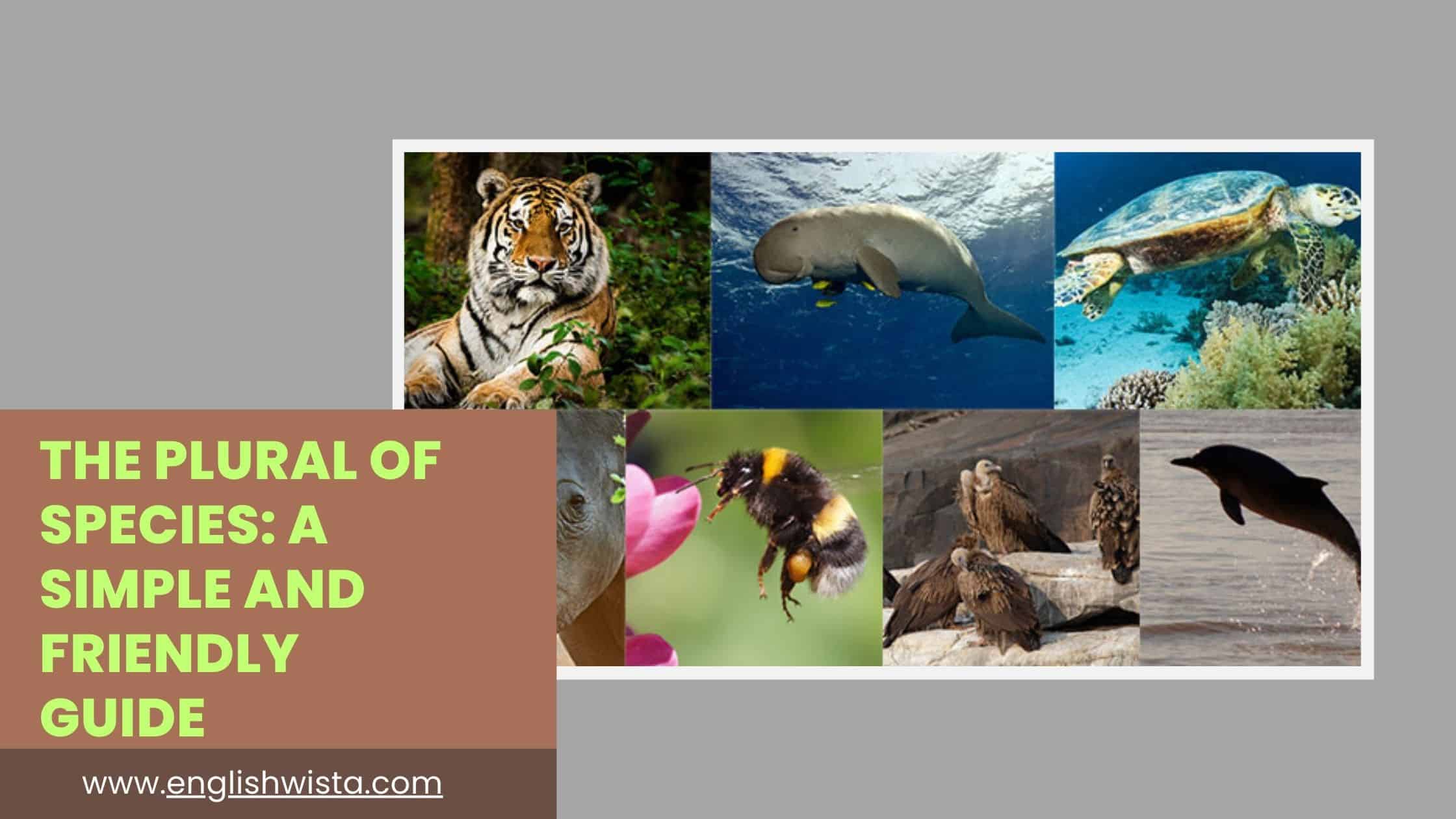Have you ever stopped mid-sentence, wondering if you should say species or specieses? You’re not alone! English has plenty of little quirks, and the word species is one of them. Whether you’re a student, a curious learner, or just someone who loves words, this guide is here to clear up the confusion.
We’ll take things step by step, using plain language and lots of examples. By the end, you’ll feel confident using the word species in both writing and conversation. Let’s dive in!
What Does “Species” Mean?
Before we talk about plurals, let’s quickly define the word.
Species is a scientific term used in biology. It refers to a group of living things plants, animals, or microorganisms that share similar features and can reproduce with each other.
- For example: Dogs belong to one species, and cats belong to another.
- In scientific classification, species is the basic unit.
So, when we say species, we’re talking about a type or group of living organisms.
What Is the Plural of Species?
Here’s the straightforward answer:
👉 The plural of species is species.
Yes, you read that right. The singular and the plural are exactly the same! You don’t add an “-s” or change the ending. It stays unchanged whether you’re talking about one group or many groups.
- Singular: This species of bird is rare.
- Plural: Several species of birds live in this forest.
It might feel odd at first, but once you get used to it, it’s actually pretty simple.
Why Doesn’t the Word Change?
Good question! Most English words form their plural by adding “-s” or “-es” (like cats or houses). But species is different because it comes from Latin.
In Latin, many words had the same form for both singular and plural. When English borrowed the word, it kept this feature. That’s why you don’t see “specieses.”
Other English words that work the same way include:
- Series (one series, two series)
- Deer (one deer, many deer)
- Fish (sometimes unchanged in plural)
So, think of species as part of this special group of unchanged plural nouns.
Is “Species” Singular or Plural?
Here’s where things can get a little tricky. The word species can be both singular and plural, depending on how you use it.
- Singular use: Refers to one group of organisms.
- Example: The panda is an endangered species.
- Plural use: Refers to more than one group of organisms.
- Example: Tropical rainforests are home to thousands of species.
How do you tell the difference? Look at the context. The verb form also gives a clue:
- This species is unique. (singular)
- These species are disappearing. (plural)
Common Mistakes People Make
Because species looks the same in both forms, it often causes confusion. Let’s clear up some common errors:
- Adding an extra “-es.”
❌ Many specieses live in the ocean.
✅ Many species live in the ocean. - Using the wrong verb.
❌ This species are found in Africa.
✅ This species is found in Africa. - Mixing singular and plural in the same sentence.
❌ A species are interesting.
✅ A species is interesting.
Remember: The word doesn’t change, but the verb does.
Real-Life Examples in Sentences
Let’s see species in action. These examples will help you recognize when it’s singular and when it’s plural.
- Singular examples:
- The tiger is an endangered species.
- This species of flower blooms only at night.
- That species is known for its bright colors.
- Plural examples:
- Several species of whales migrate through these waters.
- Scientists discovered three new species of insects.
- Many species are threatened by climate change.
Notice how the word never changes its spelling.
Comparing “Species” With Similar Words
To understand better, let’s compare it with other words that behave in unusual ways:
- Series:
- One series of books
- Two series of books
- Deer:
- One deer is standing in the field.
- Ten deer are grazing nearby.
- Sheep:
- A sheep is lost.
- The sheep are safe in the pen.
Just like these words, species keeps the same form.
Fun Facts About the Word “Species”
Words often carry little stories, and species has its own!
- Latin roots: The word comes from the Latin word species, meaning “appearance” or “form.” That makes sense since species are groups of living things that share a form or appearance.
- Plural confusion: Even scientists sometimes pause when writing, especially in casual notes. It’s not unusual to double-check sentences for the right verb agreement.
- Collective usage: You’ll often see species in discussions about biodiversity, ecology, or conservation. It’s a favorite word in environmental writing!
- How many species exist? Scientists estimate there are over 8.7 million species on Earth, though many have not yet been discovered. That’s a lot of unchanged plurals!
Quick Tips to Remember
Here are a few easy tricks to keep things clear:
- Tip 1: Species = same in singular and plural.
- Tip 2: Use is for singular, are for plural.
- Tip 3: Don’t add “-es” at the end.
- Tip 4: Look at the sentence for clues.
Example to test yourself:
- This species ___ endangered. (Answer: is)
- These species ___ closely related. (Answer: are)
Why This Matters in Everyday Life
You might think, “Do I really need to know this?” The answer is yes! Even if you’re not a scientist, you’ll come across the word species in news articles, documentaries, school, or casual conversations about nature.
Knowing how to use it correctly helps you sound clear and confident. Plus, it’s one less word to worry about when learning English grammar.
Frequently Asked Questions
Q: Can I ever say “specieses”?
A: No. That’s not correct in standard English. Always stick with species.
Q: Is “species” countable or uncountable?
A: It’s countable. You can say one species, two species, many species.
Q: Does “species” only apply to animals?
A: No. It can refer to plants, fungi, bacteria, and any living organism group.
Q: Is “species” used outside science?
A: Sometimes yes. People may use it in a broader sense, like saying, Human beings are a remarkable species.
Practice Sentences for You
Try filling in the blanks:
- The blue whale is the largest ___ on Earth.
- Several new ___ were found in the rainforest.
- This ___ is native to Asia.
- Many bird ___ migrate during winter.
(Answers: 1. species, 2. species, 3. species, 4. species)
Notice how the spelling never changes!
Conclusion
We’ve taken a friendly tour through the world of the word species. Here’s the big takeaway:
- The plural of species is species.
- It doesn’t change between singular and plural.
- Use the verb (is or are) to signal whether you mean one or many.
Now, the next time you’re reading about wildlife, writing a school essay, or chatting about nature with friends, you’ll know exactly how to use species.
Simple, right? Think of it as one less grammar puzzle to stress over. And who knows you might even impress someone by explaining why species never turns into specieses!



